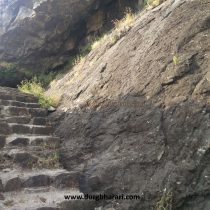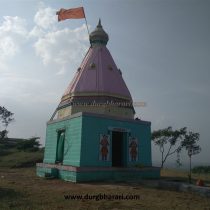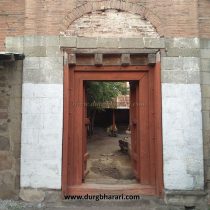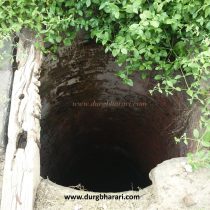DUBERGAD
TYPE : HILL FORT
DISTRICT : NASHIK
HEIGHT : 2855 FEET
GRADE : EASY
In Sinnar taluka of Nashik, there is a village called Dubera, 4 km up Sinnar on the Thangaon-Sinnar road. To reach the Dubera village, one used to go to Sinnar via Ghoti from Mumbai. 13 km from the right-hand fork of the Sinnar is the village of Dubera. The village has two entrances and is slightly fortified. There is Barvenwada in Dubera gaon and it is said that the great Bajirao Peshwa was born in this place. Behind the village is a small Dubergad with a temple of the goddess on the top. Dubergad in Dubera village is known as Devigad. There is a temple of Lord Shankar at the base of Dubergad and there is a water well nearby so accommodation can be provided in this temple. There is a temple of Saptshringi Devi on the fort and cement steps are built to go up.
...
At the beginning of this step there is a small place with an idol of Saptshringi Devi. After climbing about five hundred steps, we reach the top of the mountain in half an hour. The fort has a large lake, a temple of Saptshringi Devi, a dilapidated cement building and two rock-cut water tanks in front of it, but the water is not potable. As there is no drinking water in the fort, it has to be carried along. Apart from this, there is a dargah on the fort and there are foot sculptures in two places. One of these sculptures is under an Audumbar tree in a rainwater pond. From the top of the fort, the forts of Saptshrungigad, Markandeya, Ravala-Jawla can be seen in the northwest direction. Half an hour is enough to explore the fort. Dubergad might have been used only for surveillance. Dubergad can be easily visited in any season. Dubera village is the birthplace of the first Bajirao Peshwa. In this village there is a Barve wada which is about 300 years old. This wada with 1 bastion and a thick rampart which is still in good condition is the wada of Malhar Antaji Barve. Malhar is Radhabai's close brother. During the reign of Tararani, Malhar Antaji Barve was gifted this village and this family settled here. This area was suitable for grazing as there was a lot of grass growing in this area. The Barve family was responsible for breeding cows and bullocks on a large scale and sending good quality bullocks to drive cannon carts. Radhabai's mother was in Konkan but when she was pregnant there were rainy days. At that time, instead of sending her to Konkan, she was sent to her brother Malhar's house for delivery. The first Peshwa Bajirao was born in the year 1700 in the month of Bhadrapad to Radhabai in this wada. That room and bed in the wada are still in good condition. Currently, the eleventh generation of the Barve family is living in the wada. The east-facing Barve wada had two grand entrances but the road-side entrance is now buried. The village has two grand gates and near the western gate there is a temple with an idol of Ganapati of the Peshwa era. Most of the things in the wada are still in good condition and are still in use after 400 years. The carvings on the wooden pillars are very beautiful. There are granaries within the walls as well as cellars in the ground. There is a well in the wada and near it there used to be a stable for horses. A few years ago, the village school used to be held in the wada, but due to lack of space, it was shifted to another place. Adjacent to the wada is a large temple of Satwai Devi. When you come to see Dubergad, you must visit this wada. In 1679, while the Maratha army was returning after looting Jalna, Mughal chief Ranmastkhan blocked their way. Sardar Kesarisingh’s large army came from behind him and it became a dilemma how to free the treasure from the hands of the Mughals. At that time, Bahirji Naik led all this army with treasures to Patta fort via Duber and saved the Marathas and Shivaji Maharaja from the attack of the Mughals. Locals say that Maharaja stayed here for a day while going to Patta fort and move to Pattagad on November 22, 1679.
© Suresh Nimbalkar

























